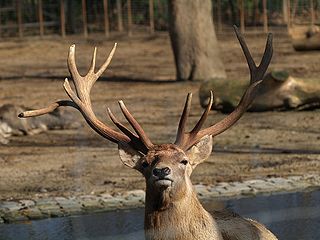
Bonn is a federal city in the German state of North Rhine-Westphalia, located on the banks of the Rhine. It has a population of over 300,000. About 24 km (15 mi) south-southeast of Cologne, Bonn is in the southernmost part of the Rhine-Ruhr region, Germany's largest metropolitan area, with over 11 million inhabitants. It is a university city, was the birthplace of Ludwig van Beethoven and was the capital of West Germany from 1949 to 1990. Bonn was the seat of government of reunited Germany from 1990 to 1999.

Cologne is the largest city of the German state of North Rhine-Westphalia and the fourth-most populous city of Germany with nearly 1.1 million inhabitants in the city proper and over 3.1 million people in the Cologne Bonn urban region. Cologne is also part of the Rhine-Ruhr metropolitan region, the second biggest metropolitan region by GDP in the European Union. Centered on the left (west) bank of the Rhine, Cologne is about 35 km (22 mi) southeast of the North Rhine-Westphalia state capital Düsseldorf and 25 km (16 mi) northwest of Bonn, the former capital of West Germany.

North Rhine-Westphalia or North-Rhine/Westphalia, commonly shortened to NRW, is a state (Land) in Western Germany. With more than 18 million inhabitants, it is the most populous state in Germany. Apart from the city-states, it is also the most densely populated state in Germany. Covering an area of 34,084 square kilometres (13,160 sq mi), it is the fourth-largest German state by size.

The Wildlife and Countryside Act 1981 is an Act of Parliament in the United Kingdom implemented to comply with European Council Directive 79/409/EEC on the conservation of wild birds. In short, the act gives protection to native species, controls the release of non-native species, enhances the protection of Sites of Special Scientific Interest and builds upon the rights of way rules in the National Parks and Access to the Countryside Act 1949. The Act is split into 4 parts covering 74 sections; it also includes 17 schedules.

The Ramsar Convention on Wetlands of International Importance Especially as Waterfowl Habitat is an international treaty for the conservation and sustainable use of Ramsar sites (wetlands). It is also known as the Convention on Wetlands. It is named after the city of Ramsar in Iran, where the convention was signed in 1971.

Remagen is a town in Germany in the state of Rhineland-Palatinate, in the district of Ahrweiler. It is about a one-hour drive from Cologne, just south of Bonn, the former West German seat of government. It is situated on the left (western) bank of the river Rhine. There is a ferry across the Rhine from Remagen every 10–15 minutes in the summer. Remagen has many notable and well-maintained buildings, churches, castles and monuments. It also has a sizeable pedestrian zone with plenty of shops.
The Japan Australia Migratory Bird Agreement (JAMBA) is a treaty between Australia and Japan to minimise harm to the major areas used by birds which migrate between the two countries. JAMBA was first developed on February 6, 1974 and came into force on April 30, 1981.

The China–Australia Migratory Bird Agreement (CAMBA) is a bilateral treaty between Australia and China that aims to protect migratory birds and their environment between the two countries. Throughout all six Articles, the treaty defines what a migratory bird is, outlines key prohibitions for both contracting parties and determines the responsibilities of both nations to protect migratory birds and their habitats. The CAMBA was first developed on 20 October 1986, and came into force on 1 September 1988. Eighty-one bird species are listed in the agreement, as shown in the CAMBA Annex listed below.
The Bonn Agreement was the initial series of agreements passed on December 5, 2001 during an international conference on Afghanistan held in Bonn. It was intended to re-create the Islamic State of Afghanistan following the U.S. invasion of Afghanistan that followed the September 11, 2001, terrorist attacks. Since no nationally agreed-upon government had existed in Afghanistan since 1979, it was felt necessary to have a transition period before a permanent government was established. A nationally agreed-upon government would require at least one loya jirga to be convened; however, in the absence of law and order in the wake of the rapid victory of American and Afghan Northern Alliance forces, immediate steps were felt to be required.
Range state is a term generally used in zoogeography and conservation biology to refer to any nation that exercises jurisdiction over any part of a range which a particular species, taxon or biotope inhabits, or crosses or overflies at any time on its normal migration route. The term is often expanded to also include, particularly in international waters, any nation with vessels flying their flag that engage in exploitation of that species. Countries in which a species occurs only as a vagrant or ‘accidental’ visitor outside of its normal range or migration route are not usually considered range states.

Hotel Petersberg is a hotel and official guest house of the Federal Republic of Germany, termed the "Bundesgästehaus". It is located on the Petersberg, a prominent mountain of the Siebengebirge near Bonn, Germany. With a height of 331 metres (1,086 ft), it overlooks the cities of Königswinter, on the right bank of the Rhine river, and Bonn on the opposite side.

The Agreement on the Conservation of African-Eurasian Migratory Waterbirds, or African-Eurasian Waterbird Agreement (AEWA) is an independent international treaty developed under the auspices of the United Nations Environment Programme's Convention on Migratory Species.

The Convention on the Conservation of Migratory Species of Wild Animals, also known as the Convention on Migratory Species (CMS) or the Bonn Convention, is an international agreement that aims to conserve migratory species throughout their ranges. The agreement was signed under the auspices of the United Nations Environment Programme and is concerned with conservation of wildlife and habitats on a global scale.
This is a list of notable events relating to the environment in 1983. They relate to environmental law, conservation, environmentalism and environmental issues.

The Memorandum of Understanding (MoU) concerning Conservation and Restoration of the Bukhara Deer is a Multilateral Environmental Memorandum of Understanding and was concluded in 2002 under the auspices of the Convention on Migratory Species of Wild Animals (CMS), also known as the Bonn Convention, in collaboration with the Central Asia Programme of the World Wide Fund for Nature (WWF). The MoU covers five range States. As of August 2012, four of them had signed the MoU, as well as a number of cooperating organizations. The MoU came into effect on 16 May 2002.

The Memorandum of Understanding (MoU) Concerning Conservation Measures for the Siberian Crane is a Multilateral Environmental Memorandum of Understanding and came into effect on 1 July 1993 and was amended in January 1999. It was the first MoU to be concluded under the auspices of the Convention on Migratory Species of Wild Animals (CMS), also known as the Bonn Convention, and focuses on conserving the Siberian crane as one of the three rarest crane species. The MoU covers twelve range states. As of August 2012, eleven range states have signed the MoU.
The Republic of Korea–Australia Migratory Bird Agreement (ROKAMBA) is a bilateral treaty between Australia and the Republic of Korea regarding the conservation of migratory birds and their habitat. The agreement was signed in Canberra on 6 December 2006 and came into force on 13 July 2007.
The Memorandum of Understanding on the Conservation of Migratory Birds of Prey in Africa and Eurasia is an international, legally non-binding agreement to protect migratory birds of prey.











